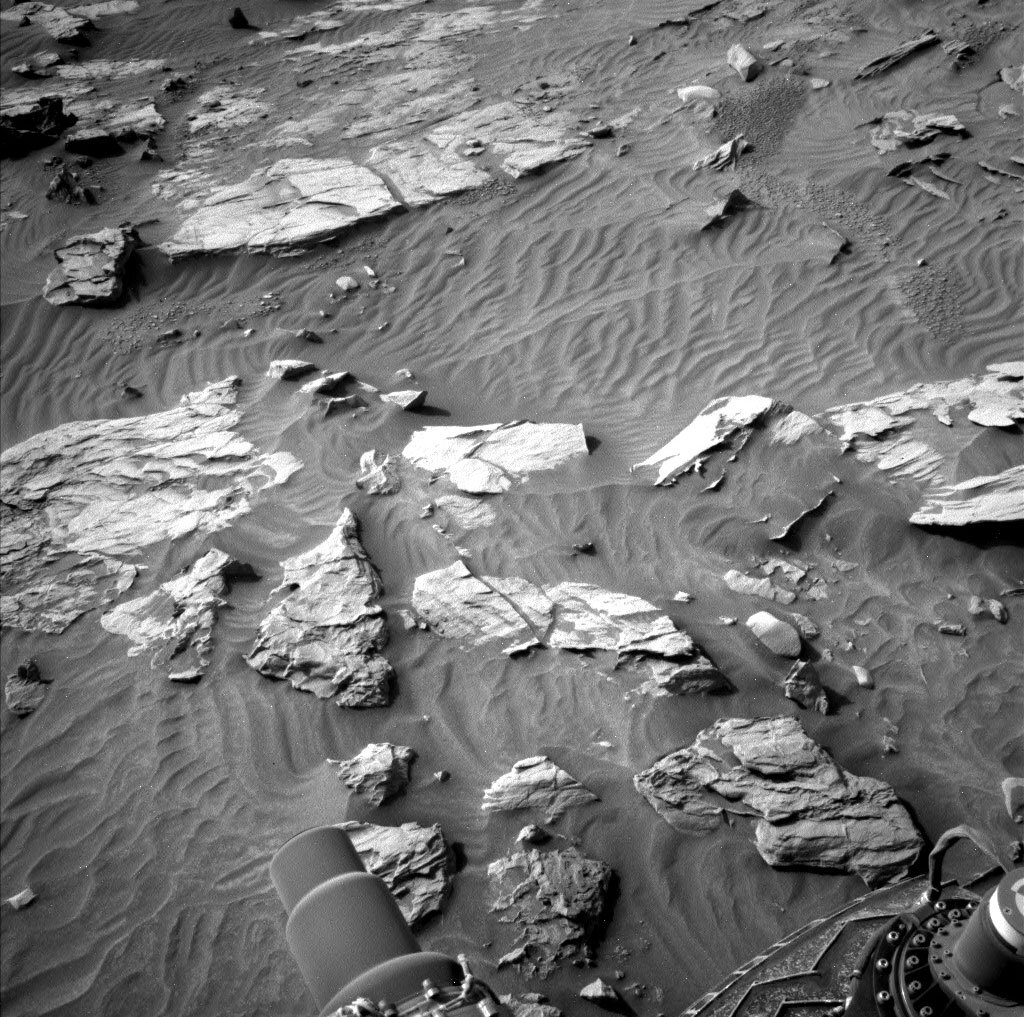3 min read

Curiosity is currently attempting a climb onto the pediment, carefully navigating rocks and sand. Our drivers are doing a great job planning but the terrain sometimes has other ideas. Thus, today’s drive came short, and we also stood on sand with some wheels and on rock with others, meaning we could not use the arm today to keep the rover safe. That said, lots of rocks and lots of vertical, dust-free surfaces make our sedimentologists really happy. Every such surface allows for more insights into the complex area and into the detailed structures of the Greenheugh pediment. So, making lemonade out of lemons, we planned many, many images and also some spectral observations.
In detail, ChemCam will be taking two LIBS measurements on the targets ‘An Fhraing’ and ‘Crichope Burn,’ to find out more about the bedrock and alteration features, respectively. ChemCam is also doing a passive observation on ‘East Suisnish,’ which has banded texture, and looking into the distance retrieving even more fascinating details from the Geddiz Vallis Ridge area.
Mastcam is equally busy joining the East Suisnish investigation with a multispectral observation to find out more about the banded texture of this rock. There are two further small mosaics to investigate alteration textures and three large mosaics on points of interest in the landscape. Mostly, what we are looking for is the textures of the rock, as seeing them in great detail will allow us to tease out how exactly those rocks formed. One additional Mastcam image stands out from those, because it is looking at more modern sediments where sorted pebbles have been found in the workspace. As you see, our plan investigates Mars from billions of years ago to very recent times!
APXS, despite the no-go for arm movements, isn’t idle either as there will be an atmospheric measurement over night to measure the argon. That’s something close to this blogger’s heart as argon is a noble gas, and the noble gases tell the story about the evolution of the Martian atmosphere. In addition, we are looking at atmospheric conditions by looking out for dust devils and at the opacity of the atmosphere by taking an image of the crater rim. It’s a very busy plan, which of course also has another drive in this challenging terrain. Let’s see in which geologist-sweet-shop we will end up on Monday!
Written by Susanne Schwenzer, Planetary Geologist at The Open University







